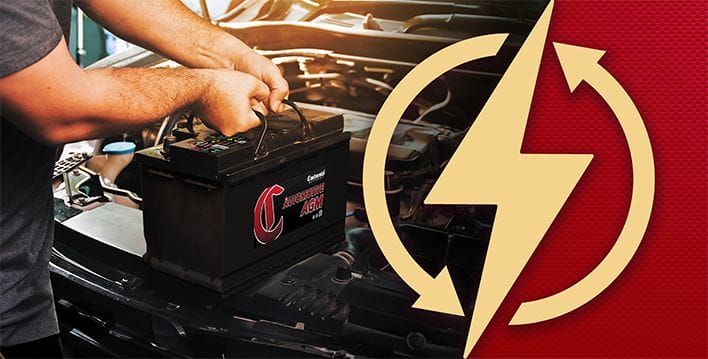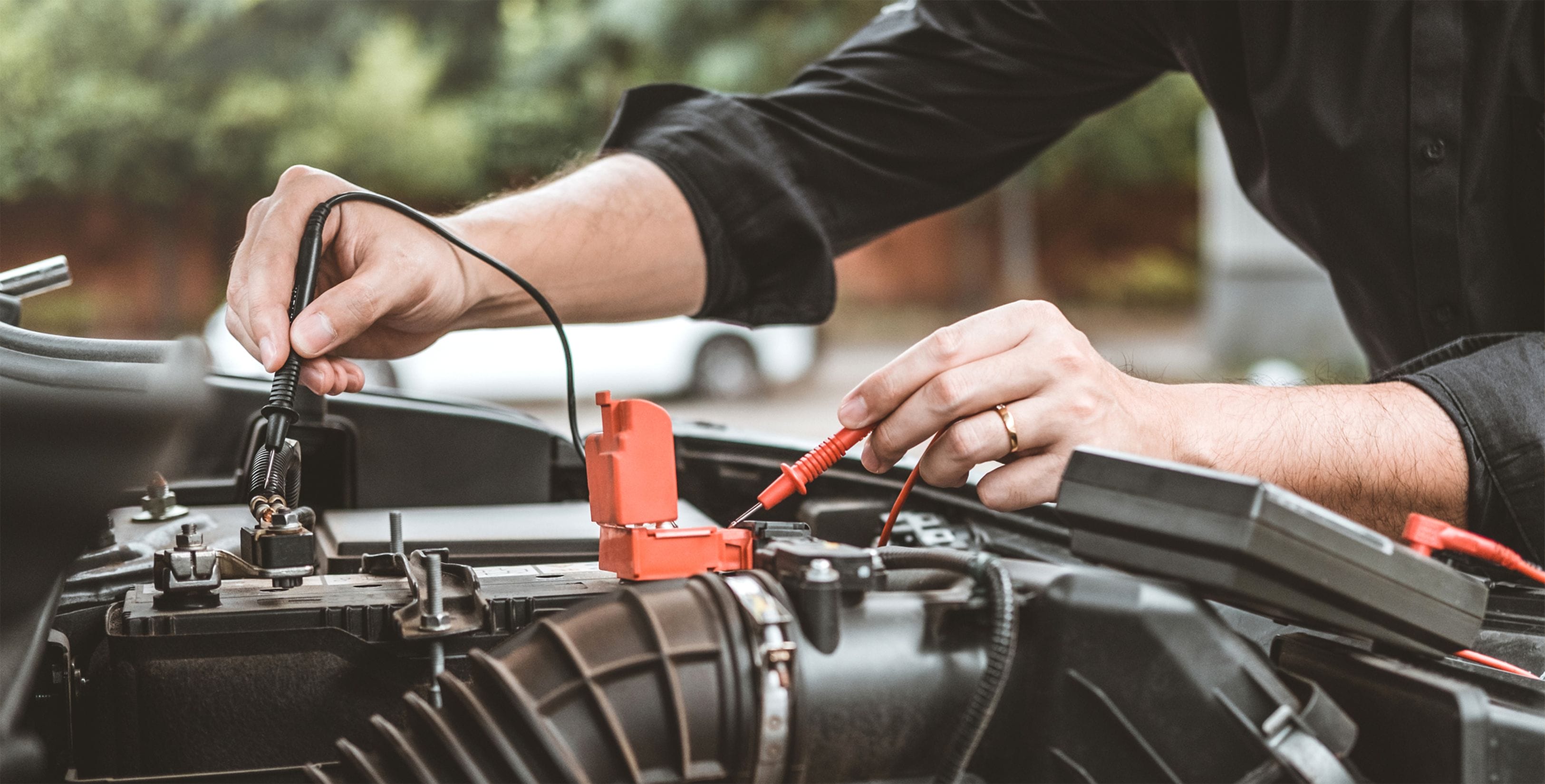
Welcome to your ultimate guide to marine batteries. When it’s time to get out on the water, you want to know you have the power to ride the waves all day. In this battery guide, we will explore the heart of your boat — the battery — and highlight everything you need to know for a safe and enjoyable ride:
- Types of marine batteries
- How to choose the right marine battery
- Tips for maintaining your marine battery
What Are Marine Batteries?
Marine batteries are specialized batteries designed to power boats, yachts and other marine vehicles. They are built to withstand the unique conditions of life on the water, including vibration, extreme temperatures and exposure to moisture.
There are three basic types of marine batteries: starting, deep-cycle and dual-purpose.
- Marine starting batteries. Like the battery in your car, these batteries are designed to give a quick burst of power to get the engine started. These are also called cranking batteries. They will get your boat engine going but will not keep it running or power accessories.
- Marine deep-cycle batteries. With thicker plates and a higher capacity for discharge and recharge cycles, these batteries can provide electricity for long periods of time. Use deep-cycle batteries to power on-board lighting, GPS, fishfinders and trolling motors.
- Marine dual-purpose batteries. These are a combination of starting and deep-cycle batteries. While they get both jobs done, they can be less effective than using separate starting and deep-cycle batteries. They are best used in smaller boats without space for extra batteries.
Types of Marine Batteries: Chemistry
The three most common types of marine batteries available today are flooded lead-acid (FLA), absorbed glass mat (AGM) and lithium (li-ion). Each is suitable for use in marine applications, but has its own advantages and drawbacks.
Flooded lead-acid (FLA). Available in both starting and deep-cycle, FLA batteries are tried, tested and readily available, making them a good option for budget-conscious customers.
Because the electrolyte is in liquid form, FLA batteries are more prone to leaking and spilling than sealed or lithium options. This can be a hazard on a boat where vibration, quick turns and uneven movements are the norm.
Absorbed glass mat (AGM). AGMs are also lead-acid batteries, but they differ from FLAs in what’s inside. AGMs are sealed, meaning they don’t have to be refilled with water like FLAs. The electrolyte inside the battery is captured in fiberglass mats, making them spill-proof.
AGMs can be mounted in any direction and are more vibration-resistant than FLAs. They also have a higher energy density, meaning they can store more energy in a smaller package.
Lithium-ion (Li-Ion). Compared to lead-acid battery technology, lithium-ion marine batteries are relatively new on the scene. Li-Ions have a higher energy density than FLA or AGM batteries, meaning they can store more energy in a smaller, lighter container.
Be sure to purchase high-quality lithium marine batteries and match your charger to the battery to avoid the risk of overheating, which can lead to a thermal runaway and, eventually ignition.
How to Choose a Marine Battery
Choosing the right marine battery can mean the difference between an enjoyable season out on the water and a day stranded at sea. In addition to choosing between lithium and lead-acid, consider the following metrics related to marine batteries:
MCA. You may be used to evaluating cold-cranking amps (CCA) on your automotive battery. Marine cranking amps (MCA) are slightly different but serve the same purpose. Boat batteries have their MCA capability tested right at the freezing point (32 degrees Fahrenheit), rather than below it (0 degrees Fahrenheit), because it’s rare that a boat will be out in frozen, icy waters.
Terminal style. Marine batteries may feature threaded terminals that make it easier to connect and disconnect cables. Make sure to choose the correct terminal style for your craft to ensure a strong connection.
Battery size and capacity. You’ll need to choose a battery that fits in your boat’s battery compartment while also making sure the capacity is the same or higher than its original battery.
Durability. Marine conditions are rough. Choose a battery with solid construction, built to withstand the rigors of life on the water, like high vibration.
Brand and warranty. Choose a reputable battery brand to ensure high-quality construction. Also pay attention to the warranty period to ensure you’re covered should issues arise.
What’s Inside?

How Long Do Marine Batteries Last?
The better you care for your marine battery, the more life you’ll get out of it. The lifespan also depends on the type of battery you choose. FLA batteries last between three and five years; AGM batteries can last a year or two beyond that; and Lithium batteries can power your boat up to a decade.
How to Maintain Marine Batteries
A dead boat battery can leave you stranded out on the water. To avoid a surprise failure, practice proper maintenance techniques year round.
At the start and end of each boating season:
- Inspect. Check your battery and terminals for any signs of damage, wear or corrosion.
- Clean. If you spot corrosion (green or white powder), clean thoroughly with a baking soda and water mixture.
- Test. Use a battery tester to check for a healthy voltage. Marine batteries should have a 12.8 voltage with a full state of charge or around 12.4 with the onboard technical components. If the voltage test shows zero, the battery has died. Anything under a 12.4-volt reading indicates you may need a new battery.
- Charge. Fully charge your battery before storing it for the off-season. Test it again when the season begins to ensure you head out on the water with a full charge.
- Store. If your battery will sit unused for an extended period, remove it from the boat and store it in a cool, dry location. Connect it to a smart charger or battery maintainer to avoid loss of charge without overcharging.
Throughout the boating season:
- Charge. Keep your battery properly charged to avoid deep discharges that can shorten its lifespan. Be sure to use the correct charger and keep the state of charge to at least 50%. Avoid overcharging.
- Clean. Corrosion can cause sulfation, which can quickly kill a battery. Marine batteries are designed to withstand water-rich environments, but moisture and saltwater can still speed the corrosion process. Check your battery regularly and clean any corrosion right away.
- Secure. Boats are not steady places for a battery. Rocking, vibration and high speeds can all cause jostling and battery damage. Make sure your battery is securely mounted throughout the season.
Replacing Your Marine Battery
High-quality batteries have fewer issues and last longer, meaning more time out on the water. When it’s time to swap out your battery, bring it to your nearest Continental Battery Systems retailer to find the best battery designed for marine applications. We’ll also collect your spent battery for recycling.







